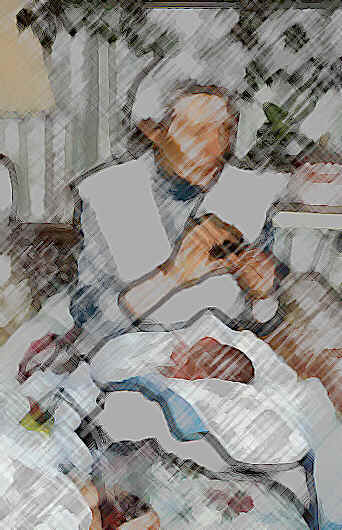 |
Contributions by the
Midwives of Antiquity to the Art and Science of Modern Medicine |
"The practice of midwifery is as old as the human race. Its history runs parallel with the history of the people and its functions antedate any record we have of medicine as an applied science. Midwives, as a class, were recognized in history from early Egyptian times. The practice of midwifery is closely bound by many ties to social customs and prejudices." [1925-A; Hardin, MD p. 347] ^104
"As a class midwives were recognized in history from early Egyptian times. In the history of European continent the practice of midwifery by the medical profession did not begin until the middle of the 16th century. [1911-E; PriceMD, p.221] ^103"That Socrates' mother was a midwife bears testimony to the honorable nature of such a profession at a time when civilization in one of its highest forms was at its summit." [1911-G; BakerMD, p. 232] ^108"The practice of midwifery dates back to the beginning of human life in this world. At this supreme moment of motherhood it is probable that some assistance has always been required and given. Its history runs parallel with the history of the people, and its functions antedate any record we have of medicine as an applied process. To deny its right to exist as a calling is to take issue with the eternal verities of life. [1911-G; BakerMD, p. 232]
Midwives of Great Antiquity
and Historical Influence
and Historical Influence
The mother of Socrates and the wife of Pericles were both midwives. Aristotle speaks of the wisdom and intelligence of the midwives of Greece.Midwives had positions of authority and influence in Germany, France, and England, writing well-known treatises on midwifery (the art of normal childbearing) and obstetrics (management of the complications of childbearing).
France’s most famous midwife was Louise Bourgeois, born in 1553, who enjoyed great distinction as a teacher, author and midwife to the Royal Court for 27 years. She delivered the future Louis XIII and 6 children of King Henry IV. Another notable French midwife was Madame Le Boursier Du Courdray. Louis XVI gave her permission to go into the providences and give free instruction to the midwives. She invented a life-size mannequin for teaching purposes, permitting her to demonstrate the position of the baby and techniques of delivery.
According to Herbert Thomas, MD, Professor Emeritus of Obstetrics and Gynecology, Yale University and author of Our Obstetrical Heritage -- The Story of Safe Childbirth (1960), “The French midwives as a group were highly influential in advancing obstetrics.” Other French midwives of note were Marie Duges, chief midwife at the time of the French revolution and mother of the famous midwife Louis La Chapelle, born 1769.
The celebrated German midwife Justine Siegemundin (“Pious Justine”) who was Court Midwife to the Electorate of Brandenburg wrote an early midwifery text published in 1776. It was subsequently translated into Dutch and used in the universities of Germany. She was called a “lantern-bearer in the darkness of ignorance and superstition”.
Alice Dennis was a Danish royal midwife who attended Anne of Denmark.
Jane Sharp was the first English midwife to write a book on midwifery called "The Midwives Book or the Whole art of Midwifery Discovered; directing childbearing women in how to behave themselves (1671). Mrs. Margaret Stevens who delivered Queen Charlotte, wrote a “commendable treatise” call “The Domestic Midwife” giving instructions to midwives in the use of obstetrical forceps.
During the 1800s, Florence Nightingale, usually only remembered for her association with nursing, and was especially interested in midwifery and wrote a book on the subject. One of her nurses-- Dame Rosalind (Padget) was the leading spirit in founding the English Midwives Institute in 1881.
The literary works by these exceptionally gifted midwives did much to contribute to the understanding of normal labor and birth by “medical men” of the day. These midwifery textbooks, along with the work of the vivisectionists, laid the foundation for the classical obstetrical texts written during the renaissance period. The body of knowledge which has became the modern-day surgical discipline of obstetrics is directly traceable to these early midwives.
No comments:
Post a Comment